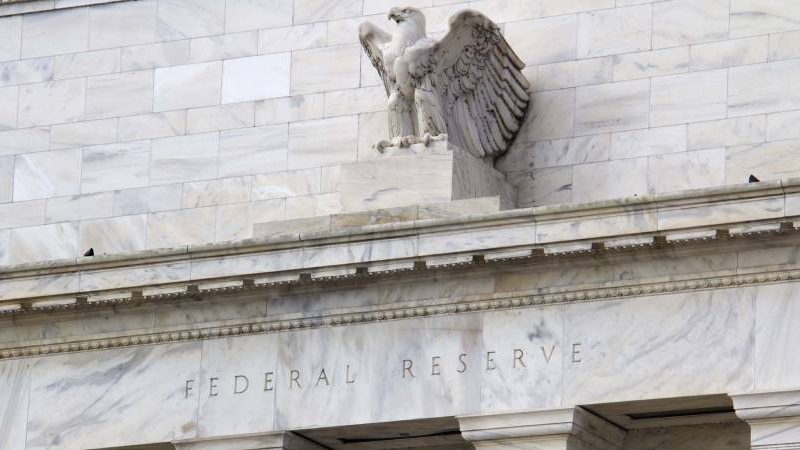by Brian Levitt and Talley Léger, Invesco Canada
In response to rising inflation, the U.S. Federal Reserve (Fed) announced on Dec. 15 that it would more aggressively taper its monthly bond purchases and might raise interest rates as many as three times in 2022. It’s the type of announcement that caused markets to “tantrum” in the past, but this time the broad U.S. market largely took the news in stride. So what comes next? Global Market Strategist Brian Levitt and Equity Strategist Talley Léger discuss the immediate aftermath of the announcement and what they expect ahead.
Brian: The Fed seemed to have telegraphed their message to the market. By now we had all expected them to accelerate the tapering of their asset purchases and to put in place expectations for multiple rate hikes in 2022. I’m not surprised to have seen the broad U.S. market thus far largely take it in stride. The S&P 500 Index is a stone’s throw from an all-time high. However, in the aftermath of the announcement, U.S. bonds rallied, the U.S. dollar weakened, cyclical value sectors led the way while the secular growth stocks within the information technology sector were down meaningfully. It’s the anti-taper tantrum! In the immortal words of coach Vince Lombardi, “What the (heck’s) going on out here?”
Talley: In my humble opinion, the decline in both long-term bond yields and tech stock prices is contradictory. I don’t think markets and investors can have it both ways. In my view, the Fed is taking its foot off the gas pedal into an already slowing economy, which I would expect to favour growth “surrogate” stocks like tech. From that perspective, the fact that 10-year U.S. Treasury yields are now lower than they were in March makes perfect sense. It also seems the bond market is looking past hot inflation prints, given that consumers’ 5- to 10-year inflation expectations appear well-anchored for the time being.
While the accelerated tapering schedule was well communicated, it’s possible that the stepped-up timeline for interest-rate hikes rattled some equity investors, causing a near-term shakeout in tech stocks. Ultimately, however, I’d take my cue for equity sector positioning from the bond market, which has been rallying across the curve. I can’t remember who said it first, but doesn’t the bond market get it right more often than the stock market?
Brian: It is also said that the first interest rate hike of a cycle isn’t what matters, it’s the last one. I’m old enough to remember market performance in the years following the cycles’ first interest-rate hikes in 1994 and 2015, which was quite strong and led by growth companies. But in those years, inflation was quite tame compared to today. Inflation expectations, as represented by the inflation breakeven, appear to have peaked in mid-November. When it comes to style and sector positioning, do you have other indicators to suggest that this is a sea change?
Talley: Interestingly, the yield curve – the difference between 10- and 2-year U.S. Treasury bond yields for example – has steepened a bit in the immediate wake of the Fed’s announcement. I bring it up because it’s a classic indicator to watch for a potential rotation away from growthy tech stocks to deep-value financials, so it’s worth monitoring. One day doesn’t make a trend, but so far we’ve seen a bull steepening of the yield curve, meaning shorter-term bond yields have been falling more than longer-term ones. Personally, those intra-bond market dynamics don’t get me excited about economic growth prospects enough to dive into deep value financials. How about you?
Brian: I would think that the more value-oriented sectors may struggle to find a catalyst here. Growth is slowing, the Omicron variant appears to be spreading rapidly (it’s still too soon to tell the severity of cases, but early indications may be promising) and policy is tightening at the margin. As I write that, I realize it sounds somewhat ominous. Do you worry about how this all plays out? Take us home. What might the next 12 months look like?
Talley: In the context of an inflationary (albeit moderating) economic boom in the U.S., I think the scheduled removal of extraordinary monetary support is reasonable. Let’s be clear: We’re experiencing the first soft patch of this new business cycle, not necessarily an acute slowdown that immediately precedes an economic recession. That time will come, as it always does, but the positive slope of the yield curve suggests there’s room for the Fed to tighten before policy and financial conditions become restrictive. If that’s right, I’m inclined to stick to the growth style of investing and tech stocks, which generally still offer rapid sales and earnings growth rates.
Should some combination of fading Omicron concerns, increased mobility, cooling inflation, and a less hawkish Fed materialize, we must be prepared for a potential economic reacceleration and an associated shift in style and sector positioning. But if that happens, we’ll be loud about it.
This post was first published at the official blog of Invesco Canada.














